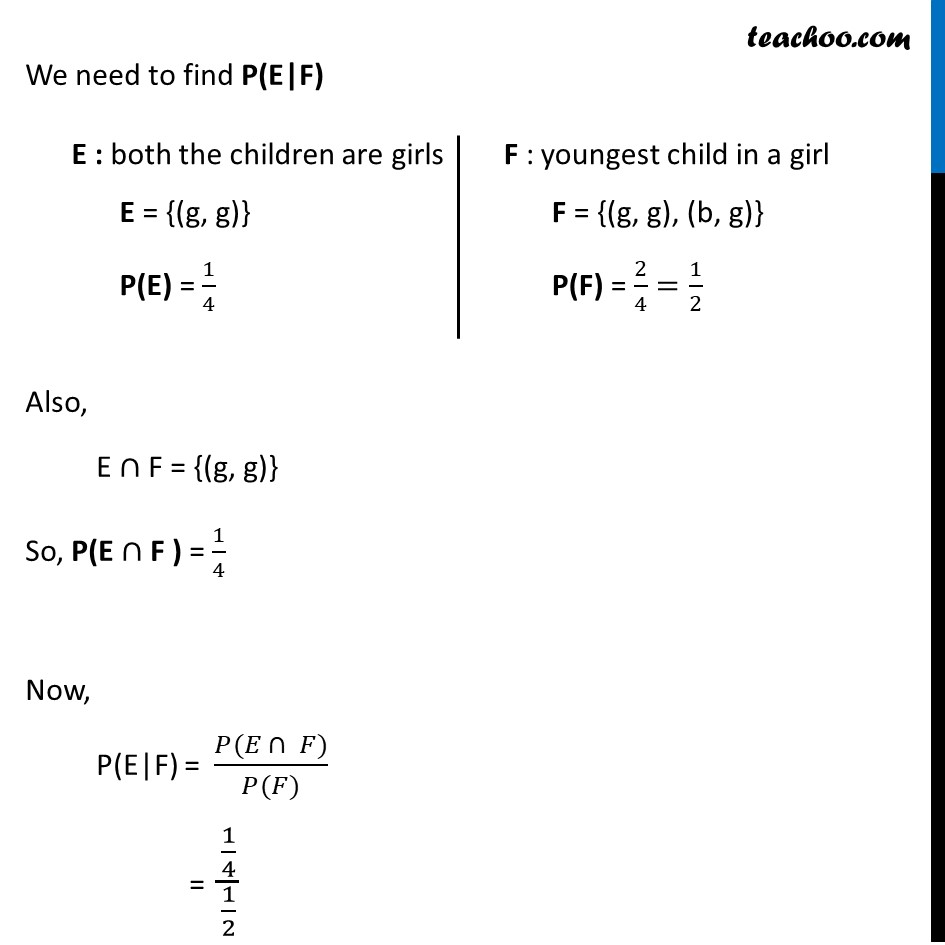




Ex 13.1
Last updated at Dec. 16, 2024 by Teachoo





Transcript
Ex 13.1, 12 Assume that each born child is equally likely to be a boy or a girl. If a family has two children, what is the conditional probability that both are girls given that (ii) at least one is a girl? S = {(g, g), (g, b), (b, g), (b, b)} We need to find the probability that the children are girls, given that at least one is a girl. E : both the children are girls F : at least one child is a girl E = {(g, g)} P(E) = 1/4 F = {(g, g), (g, b), (b, g)} P(F) = 3/4 Also, E ∩ F = {(g, g)} So, P(E ∩ F) = 1/4 Now, P(E|F) = (𝑃(𝐸 ∩ 𝐹))/(𝑃(𝐹)) = (1/4)/(3/4) = 1/4 × 4/3 = 𝟏/𝟑